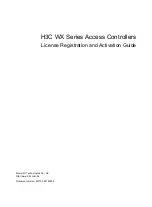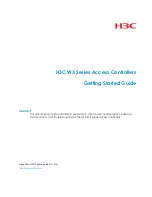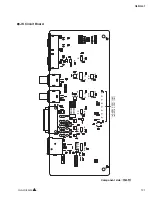
TC1796
System Units (Vol. 1 of 2)
LMB External Bus Unit
User’s Manual
13-4
V2.0, 2007-07
EBU, V2.0
Note: The TC1796 does not directly support for 8-bit data bus width. When 8-bit wide
devices are used they must be arranged in pairs to implement either a 16-bit or a
32-bit wide memory region.
13.2.2
Address Bus, A[23:0]
The address bus of the EBU consists of 24 address output lines, giving a directly
addressable range of 16 Mbytes. Directly addressable means that these address lines
can be used to access any location within one external device, such as a memory. This
external device can be selected via one of the chip select lines. Since there are four chip
select lines, four such devices with up to 64 Mbytes of address range can be used in the
external system.
13.2.3
Chip Selects, CS[3:0], CSCOMB
The EBU provides five chip select outputs, CS0, CS1, CS2, CS3, and CSCOMB. The
address ranges for which these chip selects are generated are programmed separately
for each chip select line in a very flexible way via the address select registers
EBU_ADDRSELx. The combined chip select output CSCOMB can be typically used as
a global select signal or for emulator memory selection purposes. More details are
described on
13.2.4
Burst Flash Clock Output/Input, BFCLKO/BFCLKI
The clock output signal of the EBU is provided at pin BFCLKO. It is used for timing
purposes (timing reference) during Burst Mode accesses. BFCLKO can be generated at
Burst Mode accesses continuously or only during active accesses.
The clock input BFCLKI of the EBU is used to latch read data into the EBU. Normally
BFCLKI is directly feedback and connected to BFCLKO. This feedback path can be
configured externally to maximize the operating frequency for a given Flash device or to
compensate the BFCLKO clock pad delay. More details are described on
and
.
13.2.5
Read/Write Control Lines, RD, RD/WR and MR/W
Two lines are provided to trigger the read (RD) and write (RD/WR) operations of external
devices. While some read/write devices require both signals, there are devices with only
one control input. The RD/WR line is then used for these devices. This line will go to an
active-low level on a write, and will stay inactive high on a read. The external device
should only evaluate this signal in conjunction with an active chip select. Thus, an active
chip select in combination with a high level on the RD/WR line indicates a read access
to this device.
















































